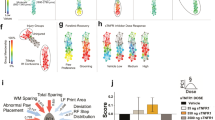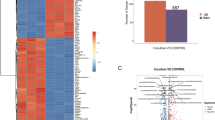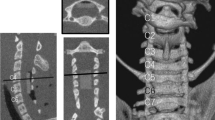Abstract
Study design:
An experimental animal model was used to assess spinal cord injury following lateral hemitransection at thoracic spinal cord level.
Objective:
To determine whether extract of Ginkgo biloba (EGb) could have a neuroprotective effect in spinal cord injury (SCI) in rats.
Setting:
Department of Biological Sciences and Biotechnology, Tsinghua University, China.
Methods:
A total of 72 adult rats were divided randomly into three groups: the EGb group, normal saline (NS) group, and sham operation group (sham group). After thoracic spinal cord hemitransection was performed at the level of the 9th thoracic vertebra (T9), rats in the EGb group were given 100 mg/kg EGb 761 daily, while rats in the NS group received NS. The rats in the sham group only underwent laminectomy without spinal cord hemitransection. At various time points after surgery, thoracic spinal cords were sampled and sliced for histochemistry, immunohistochemistry of inducible nitric oxide synthase (iNOS), and terminal deoxynucleotidyl transferase-mediated dUTP nick-end labeling (TUNEL) of apoptotic cells.
Results:
Myelin staining showed that the area of cavities was small and the demyelinated zones were limited at and around the injury site of the spinal cord in the EGb group, while the area of cavities was large and the demyelinated zones were serious in the NS group. Nissl staining showed that the ratio of bilateral ventral horn neurons (transection side/uninjured side) in the EGb group was higher than that in the NS group (P<0.05). The apoptotic index and the percentage of iNOS-positive cells were lower in the EGb group than in the NS group. Furthermore, the percentage of iNOS-positive cells positively correlated with the apoptotic index (r2=0.729, P<0.01) after SCI.
Conclusion:
This study demonstrated that EGb 761 could inhibit iNOS expression and have neuroprotective effect by preventing nerve cells from apoptosis after SCI in rats.
Similar content being viewed by others
Log in or create a free account to read this content
Gain free access to this article, as well as selected content from this journal and more on nature.com
or
References
Beattie MS . Inflammation and apoptosis: linked therapeutic targets in spinal cord injury. Trends Mol Med 2004; 10: 580–583.
Chen WH, Tzeng SF . Pituitary adenylate cyclase-activating polypeptide prevents cell death in the spinal cord with traumatic injury. Neurosci Lett 2005; 384: 117–121.
Fehlings MG, Bracken MB . Summary statement: the Sygen(GM-1 ganglioside) clinical trial in acute spinal cord injury. Spine 2001; 26: S99–S100.
Koda M et al. Brain-derived neurotrophic factor suppresses delayed apoptosis of oligodendrocytes after spinal cord injury in rats. J Neurotrauma 2002; 19: 777–785.
Li X, Oudega M, Dancausse HA, Levi ADO . The effect of methylprednisolone on caspase-3 activation after rat spinal cord transection. Restor Neurol Neurosci 2000; 17: 203–209.
Gaviria M, Privat A, d'Arbigny P, Kamenka JM, Haton H, Ohanna F . Neuroprotective effects of a novel NMDA antagonist, Gacyclidine, after experimental contusive spinal cord injury in adult rats. Brain Res 2000; 874: 200–209.
Calapi G et al. Neuroprotective effects of Ginkgo biloba extract in brain ischemia are mediated by inhibition of nitric oxide synthesis. Life Sci 2000; 67: 2673–2683.
Oken BS, Storzbach DM, Kaye JA . The efficacy of Ginkgo biloba on cognitive function in Alzheimer's disease. Arch Neurol 1998; 55: 1409–1415.
Zimmermann M, Colciaghi F, Cattabeni F, Di LM . Ginkgo biloba extract: From molecular mechanisms to the treatment of Alzheimer's disease. Cell Mol Biol 2002; 48: 613–623.
Ahlemeyer B, Krieglstein J . Pharmacological studies supporting the therapeutic use of Ginkgo biloba extract for Alzheimer's disease. Pharmacopsychiatry 2003; 36: S8–S14.
Gong QH, Wu Q, Huang XN, Sun AS, Shi JS . Protective effects of Ginkgo biloba leaf extract on aluminum-induced brain dysfunction in rats. Life Sci 2005; 77: 140–148.
Luo Y et al. Inhibition of amyloid-beta aggregation and caspase-3 activation by the Ginkgo biloba extract EGb761. PNAS 2002; 99: 12197–12202.
Massieu L, Morán J, Christen Y . Effect of Ginkgo biloba (EGb 761) on staurosporine-induced neuronal death and caspase activity in cortical cultured neurons. Brain Res 2004; 1002: 76–85.
Maclennan KM, Darlington CL, Smith PF . The CNS effects of Ginkgo biloba extracts and ginkgolide B. Prog Neurobiol 2002; 67: 235–257.
Zurita M, Vaquero J, Oya S, Morales C . Effects of dexamethasone on apoptosis-related cell death after spinal cord injury. J Neurosurg 2002; 96 (Suppl): 83–89.
Liu XZ et al. Neuronal and glial apoptosis after traumatic spinal cord injury. J Neurosci 1997; 17: 5395–5406.
Lu J, Ashwell KW, Waite P . Advances in secondary spinal cord injury: role of apoptosis. Spine 2000; 25: 1859–1866.
Martin LJ, Chen K, Liu ZP . Adult motor neuron apoptosis is mediated by nitric oxide and Fas death receptor linked by DNA damage and p53 activation. J Neurosci 2005; 25: 6449–6459.
Kim DH, Vaccaro AR, Henderson FC, Benzel EC . Molecular biology of cervical myelopathy and spinal cord injury: role of oligodendrocyte apoptosis. Spine J 2003; 3: 510–519.
Horiuchi H, Ogata T, Morino T, Chuai M, Yamamoto H . Continuous intrathecal infusion of SB203580, a selective inhibitor of p38 mitogen-activated protein kinase, reduces the damage of hind-limb function after thoracic spinal cord injury in rat. Neurosci Res 2003; 47: 209–217.
Waldmeier PC . Prospects for antiapoptotic drug therapy of neurodegenerative diseases. Prog Neuropsychopharmacol Biol Psychiatry 2003; 27: 303–321.
Satake K et al. Nitric oxide via macrophage iNOS induces apoptosis following traumatic spinal cord injury. Mol Brain Res 2000; 85: 114–122.
Yu YM, Matsuyama Y, Nakashima S, Yanase M, Kiuchi K, Ishiguro N . Effects of MPSS and a potent iNOS inhibitor on traumatic spinal cord injury. Neuroreport 2004; 15: 2103–2107.
Christen Y, Maixent JM . What is Ginkgo biloba extract EGb 761? An overview – from molecular biology to clinical medicine. Cell Mol Biol 2002; 48: 601–611.
Zhu L, Wu J, Liao H, Gao J, Zhao XN, Zhang Z . Antagonistic effects of extract from leaves of Ginkgo biloba on glutamate neurotoxicity. Zhongguo Yao Li Xue Bao 1997; 18: 344–347.
Hsu SH, Chang CJ, Tang CM, Lin FT . In vitro and in vivo effects of Ginkgo biloba extract EGb 761 on seeded Schwann cells within poly(DL-lactic acid-co-glycolic acid) conduits for peripheral nerve regeneration. J Biomater Appl 2004; 19: 163–182.
Acknowledgements
This work was supported by the China Postdoctoral Science Foundation and the National Basic Research Program (also called 973 Program) of China (No. 2005CB623905).
Author information
Authors and Affiliations
Rights and permissions
About this article
Cite this article
Ao, Q., Sun, XH., Wang, AJ. et al. Protective effects of extract of Ginkgo biloba (EGb 761) on nerve cells after spinal cord injury in rats. Spinal Cord 44, 662–667 (2006). https://doi.org/10.1038/sj.sc.3101900
Published:
Issue date:
DOI: https://doi.org/10.1038/sj.sc.3101900
Keywords
This article is cited by
-
Extract of Ginkgo biloba exacerbates liver metastasis in a mouse colon cancer Xenograft model
BMC Complementary and Alternative Medicine (2017)



